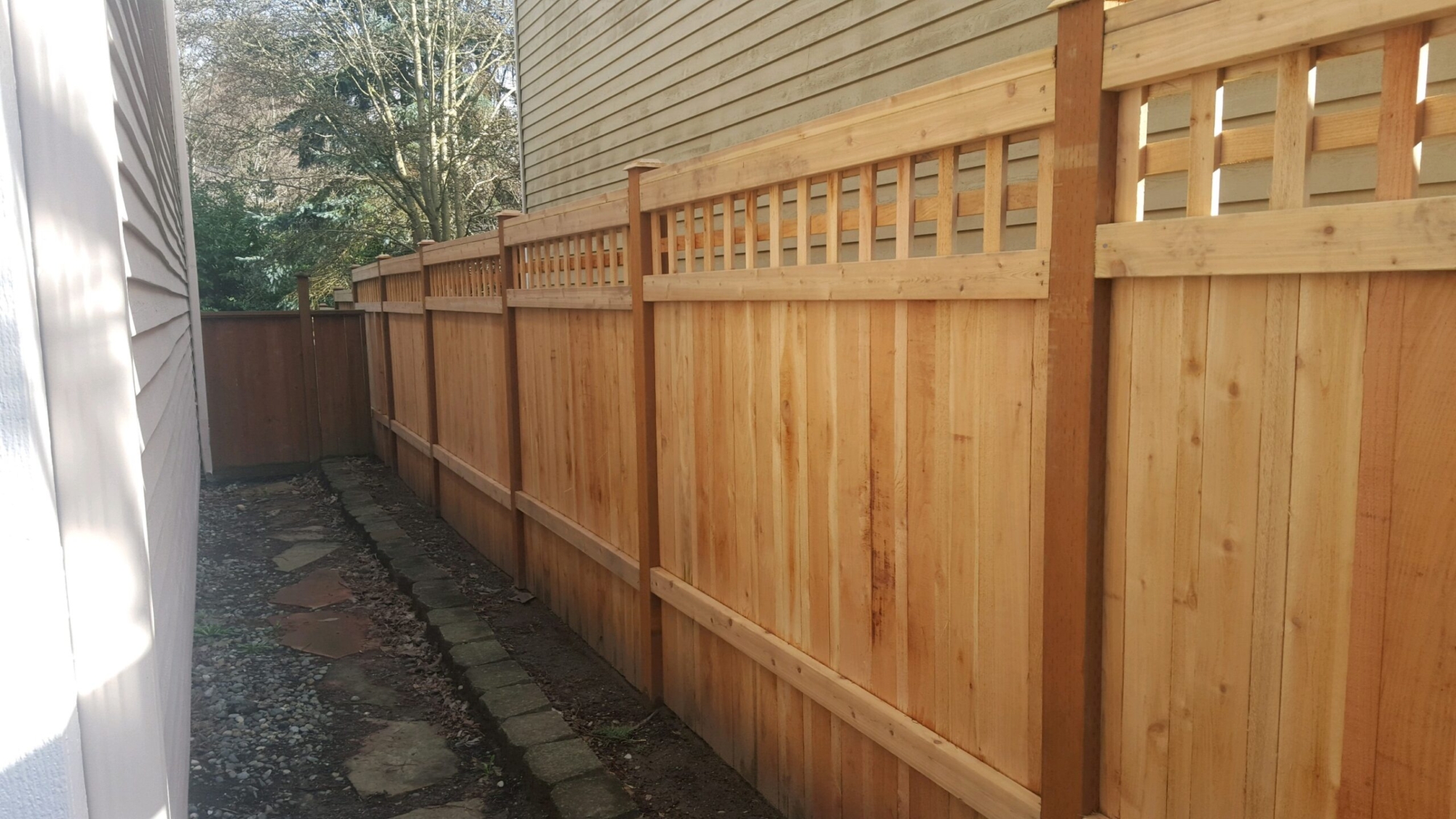Tips on Choosing a Privacy Fence for Your Home
Homeowners build a fence to mark their property line, protect their families and pets, and add security, especially in a neighbourhood with a lot of foot traffic. But in some situations, the focal point of a fence is privacy. A privacy fence makes sense if you’re looking for a way to create separation and seclusion in your outdoor area.
How does a privacy fence differ from the usual type of fence?
It’s taller than the standard 4-foot fence, usually ranging from 5 to 8 feet tall. It also offers complete coverage, so a passerby can’t peek into your yard or garden. Also, privacy fences often feature design elements such as lattice tops and diagonal boards that create a visual barrier while allowing air and light to pass through.
The material used in building a privacy fence may differ from the conventional fence. Wooden and vinyl fencing are two popular options, both of which offer different advantages in terms of looks, maintenance, cost, and durability. Another popular option is brick, which can be designed with minimal space between the bricks for extra privacy.
When choosing a privacy fence for your home, consider the following tips:
Tip 1 – Check local zoning laws.
Before installing a privacy fence for your house or property, see that you understand all the regulations set by your local planning and zoning boards. It’s not like you can just build a fence and cover your entire yard. You also need to ensure you stay within the legal boundaries when it comes to fence height and width. Some cities and states have specific regulations for these matters.
Tip 2 – Factor in the maintenance needs.
A wooden privacy fence looks attractive and can be durable if properly maintained. However, it requires regular staining or painting to protect it from the elements. On the other hand, a vinyl fence is a very low maintenance and only requires an occasional spray of water to keep it looking good. Metal fencing’s most obvious enemy is rust, so you’ll want to keep it waxed or painted regularly.
Tip 3 – Consider the purpose of the fence other than privacy.
Is it purely for privacy, or do you need something to keep pets in or out? Depending on your needs, you may want a tall fence that completely blocks off view or one with some space between the boards or panels to let air and light through. Again, your local zoning laws may limit the height of the fence you can install.
Tip 4 – Use natural materials when possible.
If you’d like to add privacy without sacrificing the beauty of your outdoor space, consider using natural materials such as cedar. Not only do these materials give off a rustic look and feel, but they also provide a sense of security without completely blocking off the view of your garden.
Tip 5 – Don’t forget about gate installation.
If you plan to install a privacy fence, you must add a gate for entry and exit. Make sure you use heavy-duty hinges and locks for extra security and a latch so the gate will stay closed when needed.
Material Choices of Privacy Fences
Building a fence requires a thorough understanding of your available options. The materials used in a privacy fence range from wood or vinyl to even metal. Many homeowners also opt for composite materials, which combine the attractive look of wood with the durability of plastic and vinyl.
Here’s a rundown of your options:
1 – Wood Fence
Wooden fences can be designed with privacy in mind. For instance, using overlapping planks, spiked tops or lattice panels will create an extra layer of protection from prying eyes. But you must be mindful of its maintenance requirements, including regular staining and painting.
2 – Vinyl Fence
Vinyl fences are the most popular type of privacy fence as they’re easy to install and require very little maintenance. They come in a variety of colours, styles, heights and widths. Vinyl’s main advantage over wood is its moisture resistance, which means it won’t rot or become infested with termites.
3 – Metal Fence
Metal privacy fences can be made from chain link, wrought iron or aluminum. They offer a more contemporary and stylish look than wood or vinyl fences. The downside is that the metal fence requires frequent maintenance to prevent it from rusting.
Last Thoughts On Building a Privacy Fence
Building a privacy fence is a step towards making your outdoor space more private. However, you may have reservations, too. For example, the presence of a fence limits your landscaping and gardening options. If this is the case, you should consider using vegetation instead to create a privacy barrier. Planting shrubs along the perimeter of your yard can provide you with both an attractive and practical solution.
However, building a privacy fence is the way to go for those looking for a more permanent option. Just remember the local zoning laws and regulations and the maintenance requirements of the materials you’re considering. If you are looking for a new fence, please give Town & Country a call. We give free estimates and no money down.


Add a Comment
You must be logged in to post a comment